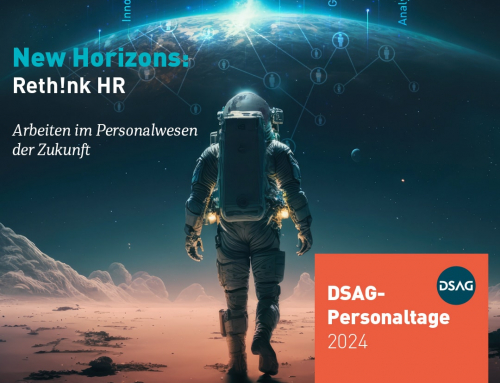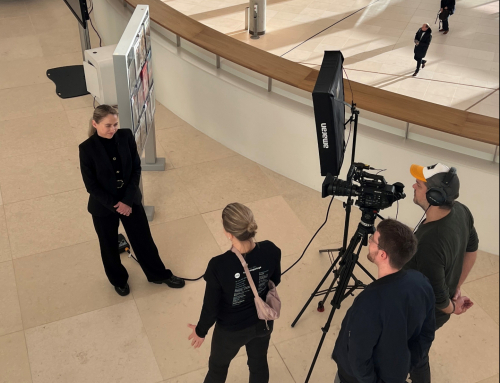Dreams of the future or reality? Optimizing project management in SAP with AI support

Artificial intelligence is on everyone's lips, research and development is tireless and AI is rapidly finding its way into everyday business life. As one of the first SAP consulting firms, Milliarum is planning to make AI-based applications available as early as this year. In this interview, our Managing Director Dirk Ott provides insights into the potential of artificial intelligence in the development of SAP add-ons and consulting services.
How and in which areas can artificial intelligence already be used in SAP add-ons and consulting?
Dirk OttThe use of artificial intelligence in SAP consulting is nothing new. We are all familiar with SAP CoPilot, for example, which was able to call up SAP functions using voice control. It has since been discontinued and will be replaced by new cloud-based chatbots from SAP, which are currently under development. In contrast, we at Milliarum are concentrating on providing chatbots for on-premise applications. We work with sensitive company-specific data. The advantage of on-premise, particularly with regard to data protection concerns, is that it is an in-house solution that is installed on the company's own servers and can also be managed from there. Our users therefore have full control over their data.
And what could the use of AI look like in the future?
Dirk OttOur vision is that everyone can be an SAP expert in their core area. However, this expertise will not be limited to controlling or project management, for example. With the help of artificial intelligence, it will also be possible to acquire detailed know-how in other areas of the SAP application or with completely different tools in a very short space of time. The trend will be towards experts being able to define complex system requirements for the respective area. Artificial intelligence will revolutionize SAP operation, which is considered complex: it will be significantly simplified. Anyone will be able to program and operate complex systems. This will significantly reduce the amount of training required. The only requirement is to know the relevant terms in order to be able to formulate targeted prompts, i.e. inputs, in natural language. Ultimately, this increases productivity and satisfaction enormously.
How does Milliarum use AI and what are its visions and next milestones?
Dirk OttOur focus is on offering AI-based solutions to increase the productivity of our users. We are currently conducting extensive research in this area and have drawn up a rough roadmap. We are focusing on the SAP areas in which we are at home, i.e. SAP-PS, SAP-PPM, resource management and the development of modern Fiori apps with UI5 interfaces. We have identified where AI offers our users optimization potential. First and foremost, this is the simplified operation of the SAP system. In these core areas, we will provide SAP-based chatbots that can operate certain functions using natural language.
How can we imagine this in a specific application?
Dirk OttIf we look at the PPM chatbot, for example, it will make it possible to create complex portfolio elements for project ideas or project proposals very intuitively. These applications are normally created in a web interface with numerous fields. With our chatbot, it will be possible in future to tell the system via voice control: "Please create a portfolio item for a project idea with a specific description and defined deadlines. The exciting thing is that the AI will then be able to ask specific questions. Anyone familiar with SAP knows that a complex object cannot be created with a few superficial pieces of information. The AI will then actually be able to ask what is missing and bring the whole thing to maturity.
What are the advantages of using artificial intelligence in SAP applications?
Dirk OttAI makes work much easier, especially for people who do not regularly work in SAP. You can also ask questions about better usability: What functions do I actually have available? The AI then lists the corresponding transactions and services. Or: Show me the ten projects or portfolio elements that have the highest actual costs or the highest contribution margin. There will also be AI applications in the SAP project system, such as cost or deadline evaluations as well as processing functions. We are also planning a chatbot for our resource management solutions. For example, the department manager could then query the employees with the highest workload or determine how busy their own department will be in the next twelve months. The AI will then not only display textual information, but also create clear graphics. When developing Fiori apps, AI-supported tools can support developers by generating ABAP codes and thus accelerating development.
Is this all a dream of the future? When will users actually be able to use such tools?
Dirk Ott: The first prerequisite is that the technical infrastructure in SAP is in place. We are planning the first SAP chatbot in on-premise solutions in the second quarter of 2024. Our roadmap also envisages the PPM and PS chatbots being implemented in the third quarter. They will be connected to our solutions in the background via an OpenAI interface. This will make it possible to operate the tools via ChatGPT or an API interface. However, this is still primarily cloud-based. That is why we are working in parallel on local models that can be used in the company network. We will also be able to integrate in-house AI models into our infrastructure in the future. In principle, we will map all solutions that are established on the market. Resource management will then follow in the fourth quarter. The aim is to lower the entry barrier to SAP and enable a faster and more productive way of using it.
What are the concerns, challenges and limitations?
Dirk OttThe concerns primarily relate to the data protection already mentioned. Another problem at present is the so-called hallucinations, i.e. fictitious statements made by chatbots. They can lead to critical follow-up problems and must be avoided. We pursue this by using our chatbots exclusively to access data from the company's internal SAP system via API interfaces. Another challenge is the hardware: powerful artificial intelligence requires huge server farms, which are currently sprouting up like mushrooms everywhere. Local models require very powerful hardware. Training is still extremely complex, resource-intensive and expensive. Milliarum makes sure that hardware requirements are kept to a minimum when connecting local models. Meanwhile, a lot of research is still being done to reduce AI's hunger for resources and we can look forward to further developments.
Thank you very much for the exciting conversation!





